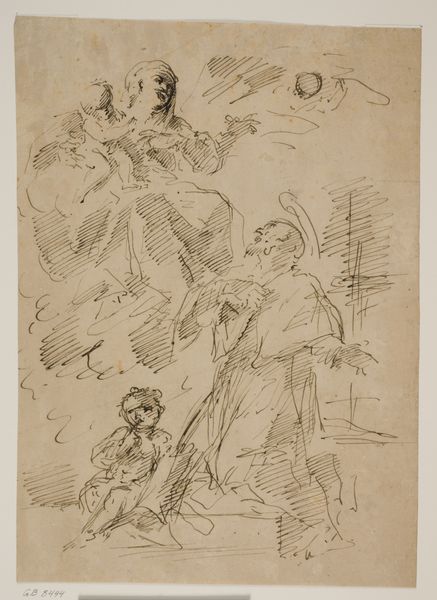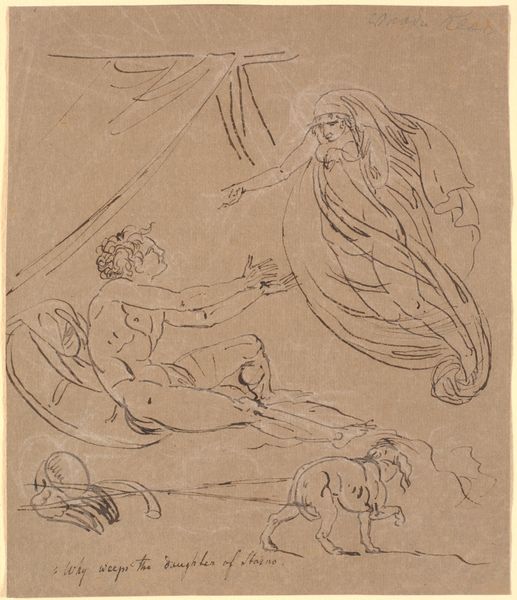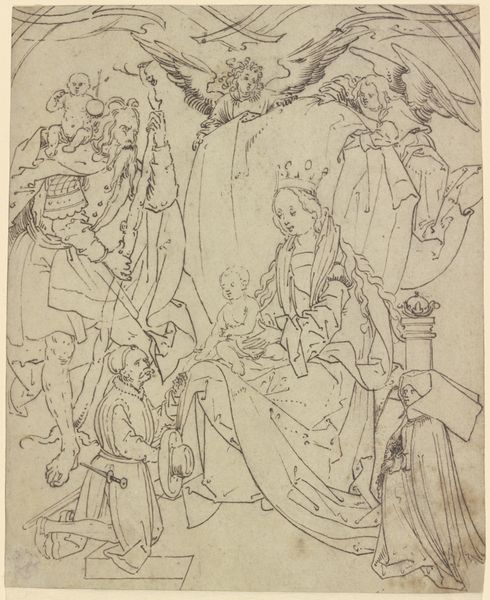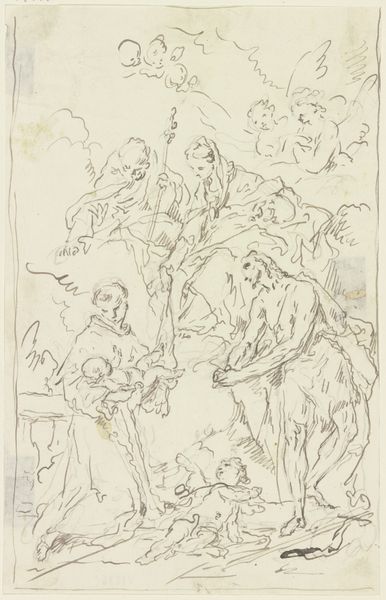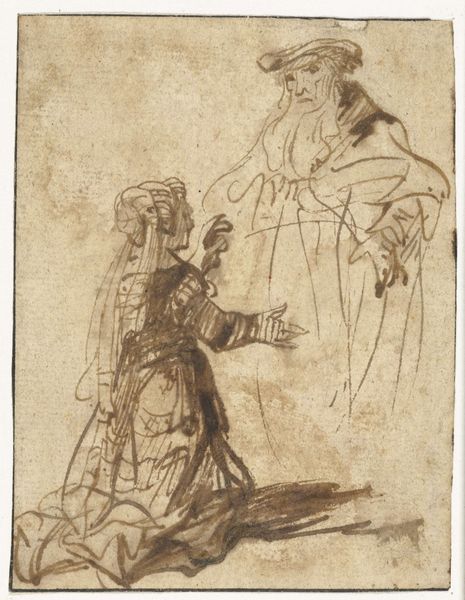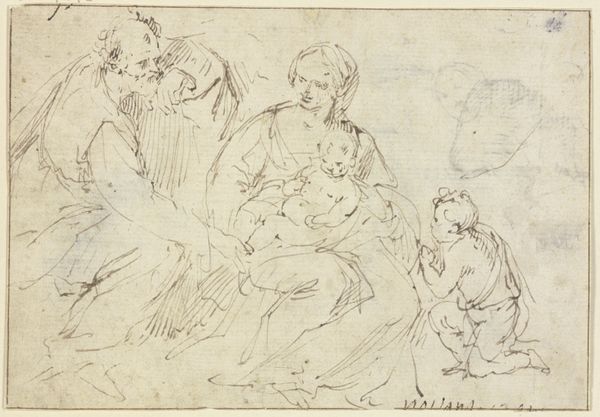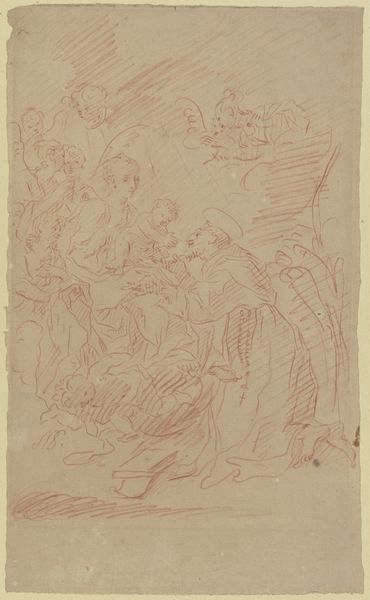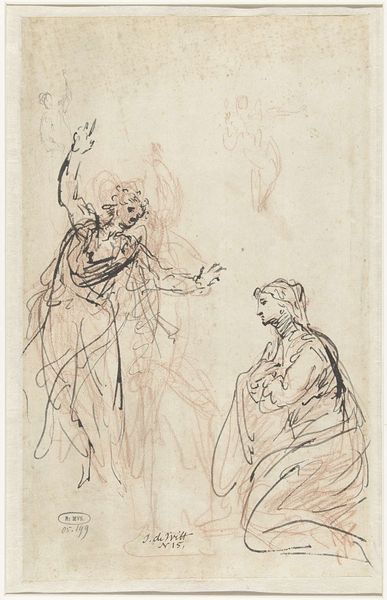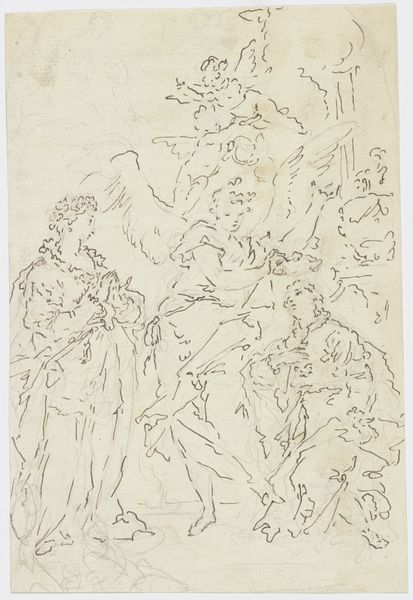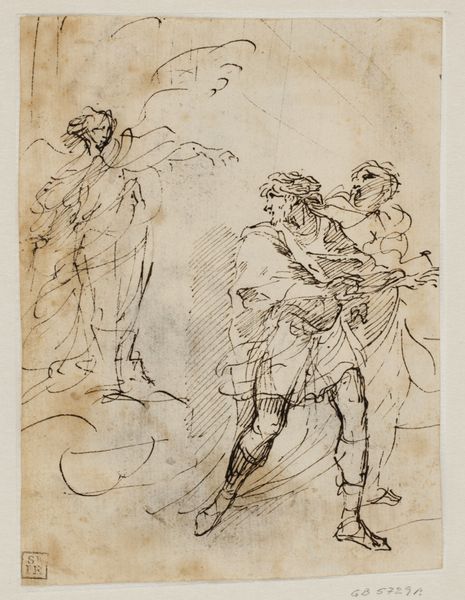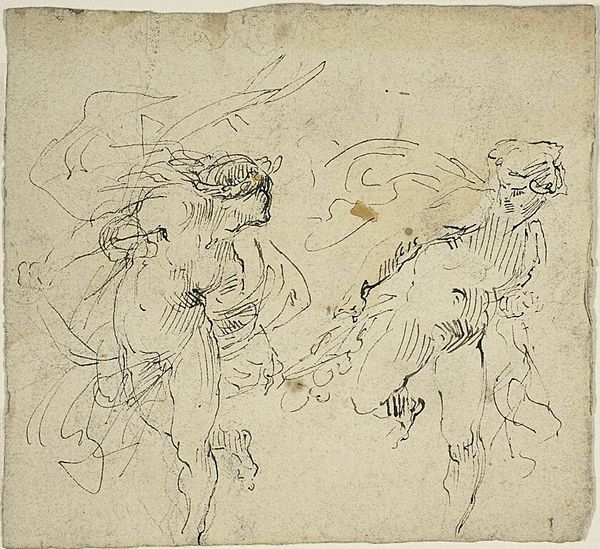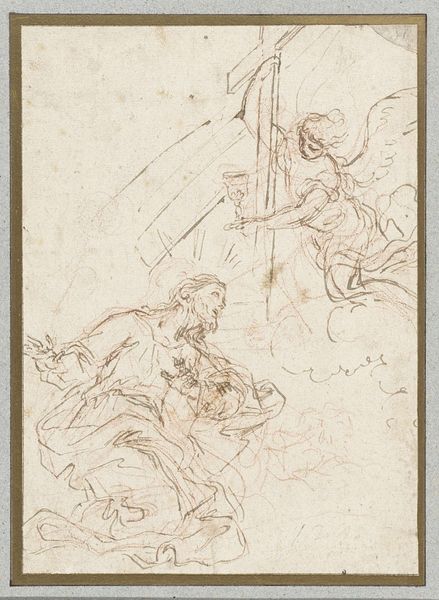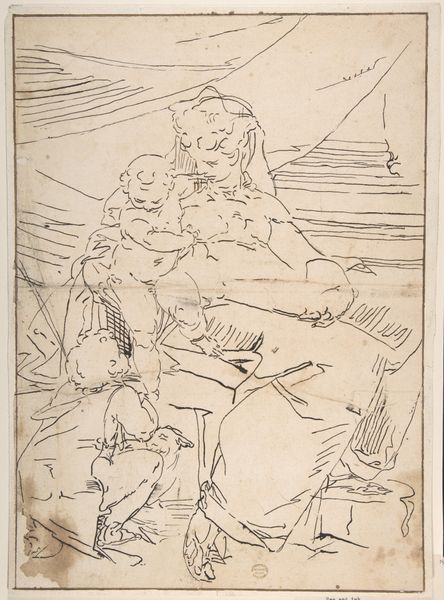
drawing, paper, ink
#
drawing
#
allegory
#
baroque
#
figuration
#
paper
#
ink
#
history-painting
Copyright: Public Domain
Curator: Tiepolo's "The Annunciation", rendered in ink on paper, strikes me immediately with its dynamic composition. The figures, though lightly sketched, possess an undeniable presence. Editor: Indeed, there is a wonderful lightness. One notes immediately the angel, kneeling amidst swirling forms that suggest clouds. It speaks to the ephemerality and ethereality of the divine message itself, conveyed by swift lines on the paper. I'm quite interested in the specific papers used, it reminds me of drawings made using discarded sheets of old account books during his period in Venice. Curator: Absolutely. The Virgin, positioned to the left, receives the angel’s pronouncement with a composed yet subtly surprised expression. The negative space around them enhances the dramatic tension. It's Baroque sensibility perfectly captures the scene's emotional weight and spiritual significance. I observe that this carefully constructed formal tension conveys not so much the event of annunciation itself, but it represents and makes present an idea. Editor: That's interesting; my perception is rather different, and the rough quality of the paper seems almost confrontational. The lines are unfinished, leaving much to the imagination, a reminder of the work inherent in all production whether divinely or humanly inspired. This seems like a very hasty composition; his labor becomes exceptionally apparent through his line work in this medium, rather different from seeing his painting. The unfinished lines force one to confront labor, here. Curator: A valid interpretation. For me, the lack of elaborate detail draws attention to the figures' gestures and postures. Each element—the angel’s raised hand, Mary’s humble acceptance—contributes to the overall harmony and expressive quality. We have the lines forming shapes of cloud surrounding them and lifting them from earth. This becomes then not the scene of mere labor or materials but, instead, spiritual conveyance and transformation Editor: The layering is also particularly interesting. There's a visible difference between initial sketch-work and any reinforcing linework he might've returned to afterwards; you see both his earliest and perhaps even corrections. The way he manipulates these modest materials reveals more, perhaps, than he may have intended about this process. We see his actions directly as they remain in view as he left them. Curator: Your perspective truly emphasizes the making-of in ways that escape a purely formalist reading. These layers introduce the time elapsed between mark making events as elements of content. This seems key to an understanding, as his choice to show the evidence of temporal making creates this understanding, a critical and transformative reading I had not conceived. Thank you! Editor: And thank you for focusing my view so acutely. I now see the elegance through the marks of toil.
Comments
No comments
Be the first to comment and join the conversation on the ultimate creative platform.
